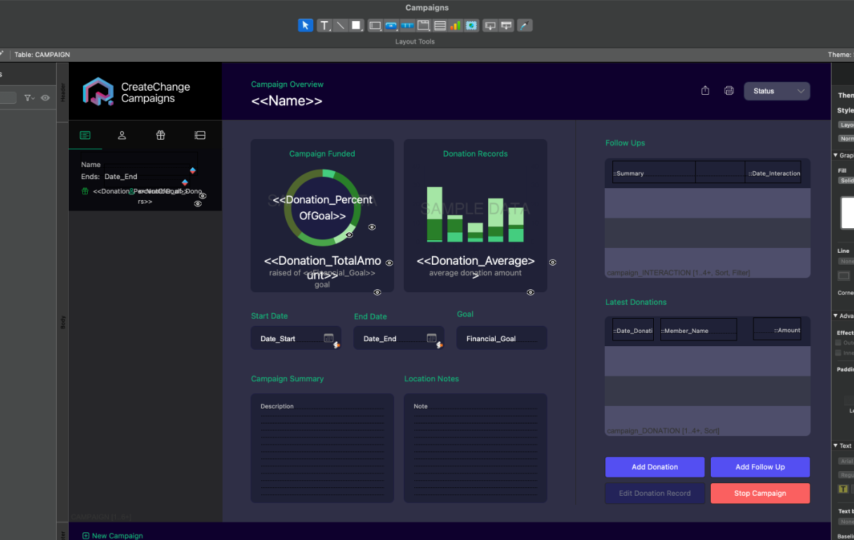The Claris FileMaker platform, known for its versatility and user-friendly design, has revolutionized how businesses create and manage custom applications. Over the decades, it has evolved significantly, adapting to technological advancements and changing business needs. From its early days as a simple database tool to its current status as a powerful platform for custom solutions, FileMaker has consistently expanded its capabilities. This article delves into the evolution of FileMaker, exploring key milestones and innovations that have shaped its journey.
The Beginnings of FileMaker
FileMaker’s journey began in 1985 when it was introduced as a database application for the Macintosh. Created by the Software Arts team, FileMaker was designed to offer a simple yet effective solution for managing data. Early versions emphasized ease of use, allowing users to create databases, manage records, and generate reports without extensive programming knowledge.
Core Features of Early Versions
Early versions of Claris FileMaker, initially released in the late 1980s and early 1990s introduced foundational features that set the stage for its evolution into a powerful database management system. Key features included a user-friendly graphical interface that allowed users to create and manage databases without needing extensive programming knowledge.
The platform offered customizable layouts for data entry and reporting, relational database capabilities for linking tables and managing data efficiently, and a range of built-in templates to streamline the creation of various applications. These early versions also supported basic scripting for automation of tasks, which greatly enhanced productivity and flexibility. FileMaker’s ability to run on both Macintosh and Windows platforms expanded its accessibility, making it a popular choice for small to mid-sized businesses looking for an intuitive and versatile database solution.
Advancements in the 1990s: Client-Server Architecture
As businesses grew and collaboration became more critical, FileMaker adapted by introducing client-server architecture with the release of FileMaker Server. This significant upgrade allowed multiple users to access and interact with a central database simultaneously, enhancing productivity and collaboration.
Enhanced Features
- Centralized Data Storage: Data was stored on a central server, enabling real-time updates and access for all users.
- Improved Security: FileMaker Server introduced robust security features, including user authentication and access controls.
- Performance Enhancements: Optimized for handling larger datasets and more simultaneous users, improving overall performance.
The Web Revolution: Web Publishing
The late 1990s and early 2000s marked a pivotal shift as FileMaker introduced web publishing capabilities. With the release of FileMaker Web Companion, users could publish their FileMaker databases on the web, extending their reach beyond desktop environments.
Key Innovations
- Web Integration: Users could access and interact with FileMaker databases via web browsers, making data more accessible.
- HTML and CGI Support: Integration with HTML and Common Gateway Interface (CGI) scripts allowed for customized web interactions.
- FileMaker WebDirect: A later development that provided a more interactive, browser-based interface for accessing FileMaker databases.
The Mobile Era: FileMaker Go
With the rise of smartphones and tablets, FileMaker introduced FileMaker Go in 2010, allowing users to access their FileMaker solutions on iOS devices. This innovation enabled businesses to leverage mobile technology for data access and management.
Features and Benefits
- Mobile Access: Users could view, edit, and interact with their FileMaker databases on the go.
- Touch-Friendly Interfaces: Designed for touchscreens, FileMaker Go offers a user-friendly experience on mobile devices.
- Offline Capabilities: Users could work offline and sync data once connectivity was restored, ensuring continuous productivity.
The Era of Customization and Automation
In recent years, FileMaker has emphasized customization and automation. Introducing advanced scripting capabilities and custom functions allowed developers to create more sophisticated and tailored applications.
Noteworthy Advancements
- Custom Scripts: Developers could automate complex tasks and workflows using FileMaker’s scripting language.
- API Integration: Integration with external APIs and services enabled FileMaker solutions to interact with other software and systems.
- Enhanced Calculations: Improved calculation functions provided more powerful data manipulation and analysis capabilities.
Embracing the Cloud: FileMaker Cloud
As cloud computing gained traction, FileMaker adapted by offering cloud-based solutions. FileMaker Cloud, introduced in 2016, provided a managed cloud hosting environment for FileMaker applications, enhancing scalability and accessibility.
Benefits of Cloud Integration
- Scalability: Businesses could scale their FileMaker solutions easily without worrying about hardware constraints.
- Remote Access: Users can access their databases from anywhere with an internet connection, facilitating remote work and collaboration.
- Integration with Cloud Services: FileMaker Cloud supported integration with popular cloud services, enhancing functionality and interoperability.
The Modern Era: Claris FileMaker
In 2019, FileMaker was rebranded as Claris FileMaker, reflecting a broader vision beyond traditional database solutions. This rebranding emphasized Claris’s commitment to innovation and its focus on integrating modern technologies.
Recent Innovations
- Claris Connect: Introduced to facilitate workflow automation and integration with various apps and services.
- Modern Technologies: Ongoing updates and enhancements to support the latest web and mobile technologies.
- User-Centric Features: Continued focus on improving user experience based on feedback and evolving needs.
The Future of Claris FileMaker
As technology continues to evolve, Claris FileMaker is poised to embrace new trends, including artificial intelligence, machine learning, and advanced data analytics. These innovations are expected to enhance the platform’s capabilities further and support increasingly complex business needs.
Claris FileMaker is committed to ongoing improvement, with regular updates and new features aimed at addressing user needs and industry trends. The platform’s flexibility and adaptability remain a valuable tool for businesses seeking custom application solutions.
Conclusion
The evolution of business applications built with the Claris FileMaker platform highlights its adaptability and relevance in a constantly changing technological landscape. From its early days as a desktop database tool to its current status as a comprehensive platform for custom applications, FileMaker has consistently evolved to meet the needs of businesses and developers. As technology continues to advance, Claris FileMaker remains well-positioned to support the next generation of business solutions, ensuring its place as a vital tool for innovation and success.
Are you ready to leverage the power of Claris FileMaker for your business? Whether you’re looking to build a new custom application or optimize an existing solution, our team of experts at Direct Impact Solutions is here to help. Contact us today to explore how FileMaker can transform your business processes and drive success.




